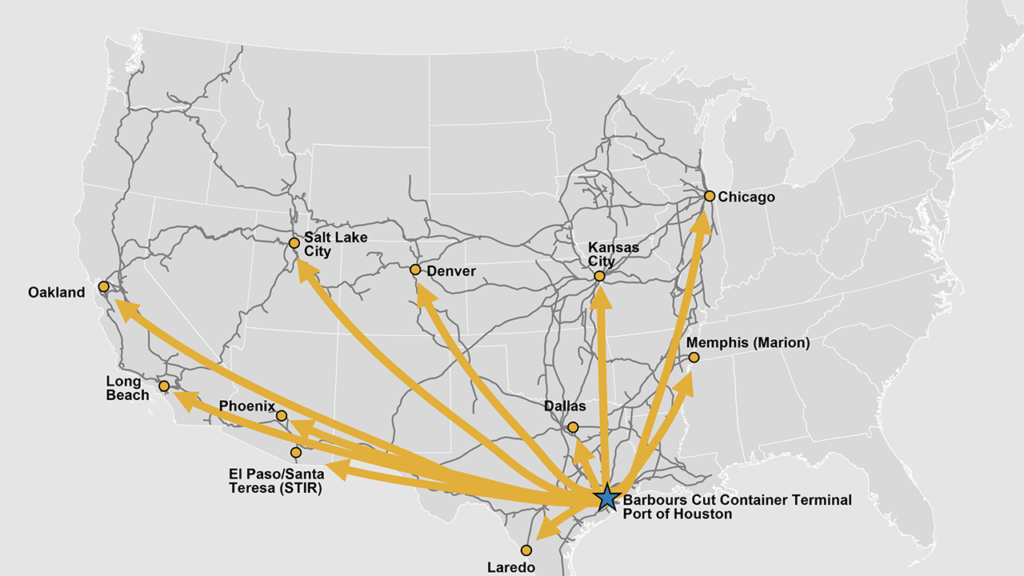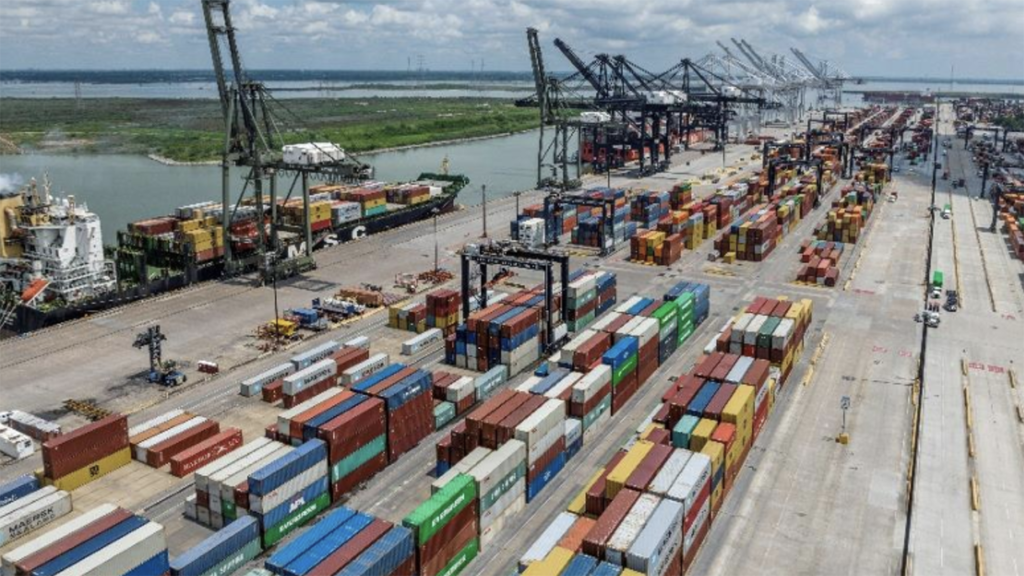
Intermodal Briefs: Ports of Indiana, UP/Port Houston
Written by Marybeth Luczak, Executive Editor![“The 2023 cargo volumes [at the Ports of Indiana] were even more impressive considering some of the major challenges facing our industry this past year with low water levels and lock closure,” Ports of Indiana CEO Jody Peacock said on Feb. 28. (Ports of Indiana Photograph)](https://www.railwayage.com/wp-content/uploads/2024/03/PortsofIndiana.png)
“The 2023 cargo volumes [at the Ports of Indiana] were even more impressive considering some of the major challenges facing our industry this past year with low water levels and lock closure,” Ports of Indiana CEO Jody Peacock said on Feb. 28. (Ports of Indiana Photograph)
The Ports of Indiana’s 2023 tonnage was the second highest in its 63-year history. Also, Union Pacific’s (UP) Port Houston-based on-dock rail service is now connecting two additional inland markets; and Port Houston’s container volumes are on the rise.
Ports of Indiana
In 2023, 12.6 million tons of cargo was shipped, up 6% from 2022, at the Ports of Indiana, which includes the Burns Harbor, Mount Vernon, and Jeffersonville ports on the Ohio River and Lake Michigan. This was second only to 2018, when Indiana’s three ports handled 14.8 million tons of cargo, according to the Ports of Indiana. The largest single cargo increase in 2023 was coal exports from Mount Vernon, which jumped 78%, it said. Fertilizer increased more than 11% overall, with double-digit gains at Mount Vernon and Jeffersonville, while soy products, minerals, ethanol, DDGs (distiller’s dried grains) and cement rose, as well.
Ports of Indiana also experienced rail shipment growth in 2023, with carloads up 28% year-over-year. All three ports increased rail shipments, but Mount Vernon led the way with 39,909 railcars, a 42% rise from 2022, according to the Ports of Indiana, which said that overall, it handled 65,141 railcars last year.
Among the railroads directly serving the Ports of Indiana are Evansville Western Railway, CSX, Louisville & Indiana Rail Road, and Norfolk Southern.
According to the Ports of Indiana, a 2023 study found that Indiana’s three ports supported more than 49,000 jobs and generated $8.7 billion annually for the state’s economy, $3.5 billion in annual wages, and $536 million in state and local taxes.
“At Ports of Indiana, we are privileged to partner with a group of world-class companies that ship critical cargoes to and from our regional economies,” Ports of Indiana CEO Jody Peacock said. “The 2023 cargo volumes were even more impressive considering some of the major challenges facing our industry this past year with low water levels and lock closures.”
“This is an exciting time at Ports of Indiana,” continued Peacock. “We’re going through a transformational period as we build up our internal resources to spur port growth and work through transitions of key terminal operators at all three ports. We’re cautiously optimistic about the 2024 cargo outlook, but we’re more excited about how our team is positioning Indiana’s port system for long-term future growth.”
In a related development, infrastructure investments surpassing $1.1 million were recently completed at Ports of Indiana-Jeffersonville through a yearlong series of road and rail projects by Ports of Indiana and MG Rail, the port’s rail switcher. Also, senior rail executive Matt Service and maritime industry veteran Ian Hirt have been hired by the Ports of Indiana to help develop new cargo and rail projects.
UP / Port Houston

In a Feb. 28 online customer notice, UP reported expanding its Houston, Tex., on-dock rail service to two additional inland markets: Dallas, Tex., and Phoenix, Ariz. In cooperation with Port Houston, ocean carriers and Beneficial Cargo Owners (BCO) now have access to rail service between Barbours Cut Container Terminal at Port Houston and 11 key UP-served markets.
“The on-dock operation will save customers’ time, reduce greenhouse gas emissions and simplify the end-to-end supply chain for all of our customers,” UP said.
UP launched the new on-dock service last June, providing international shippers of consumer goods with direct rail access to Denver, Salt Lake City, Oakland, Long Beach, and El Paso. In December, the Class I expanded the service to its intermodal facilities at Chicago Global 4, Kansas City, Memphis (Marion, AR) and Port Laredo.
Port Houston is a 25-mile-long complex of nearly 200 private and public industrial terminals along the 52-mile-long Houston Ship Channel. The eight public terminals are owned, operated, managed or leased by the Port of Houston Authority and include the general cargo terminals at the Turning Basin, Care, Jacintoport, Woodhouse, and the Barbours Cut and Bayport container terminals.
BNSF last May reported ramping up its own network of intermodal lane offerings with new service options from the Barbours Cut Container Terminal. The move, it said, was part of a “continued commitment to adjusting to our customers’ and the marketplace’s needs to enable growth and the efficient movement of shipments.”

Port Houston on Feb. 28 reported that its total container volumes in January exceeded every other January on record at its facilities. Volumes reached 332,961 TEUs (Twenty-Foot Equivalent Units), up 4% from the same month last year.
“Import and export demand through Houston remains strong and we are certainly off to a great start in 2024,” said Roger Guenther, Executive Director at Port Houston.
Container imports grew by 3% in January to 154,493 TEUs, which Port Houston said were driven primarily by strong imports from China in advance of the Lunar New Year. Loaded export volumes were up 9% from the same period last year, totaling 124,137 TEUs. This set a new Port Houston record for loaded exports in January, it said.
At its multipurpose facilities, Port Houston said steel volumes declined by 46% in January compared with the same month last year. Total tonnage across all of Port Houston’s terminals declined by 6% in January, totaling 4,187,541 tons.



